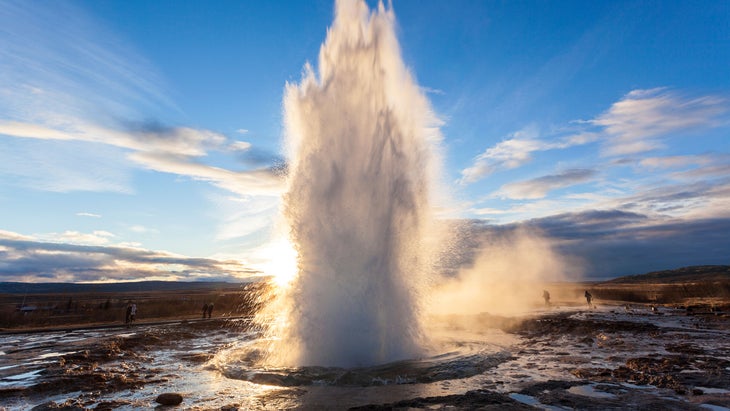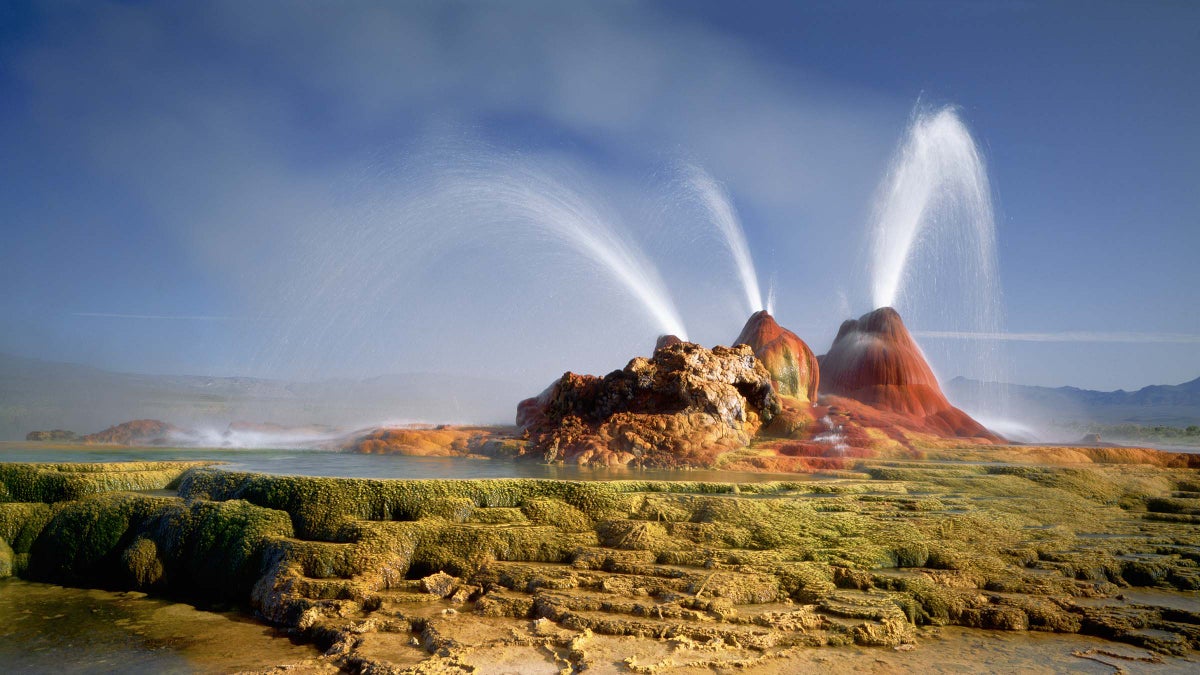Products You May Like
Get full access to Outside Learn, our online education hub featuring in-depth fitness, nutrition, and adventure courses and more than 2,000 instructional videos when you sign up for Outside+
Sign up for Outside+ today.
There’s a lot of unbelievable stuff in the wilderness. Get to know it in our field guide to natural phenomena.
Ninety minutes: On average, that’s the most you’ll need to wait to see Old Faithful, the most famous geyser in the world. Geysers are appreciated by many—just look at the crowds around OF—but understood by few. Here’s what you need to know about these explosive springs before you visit one in person, and certainly before you decide to take a dip.
How Do Geysers Work?
Remember the Mentos in a Diet Coke bottle trick? In this pop science experiment, the candy acts as a catalyst, causing bubbles to rapidly form in the soda; the increase in pressure forces foam from the top in a geyser-like spray. A natural geyser, however, is much more complicated. If you boil it down (pun intended), a geyser is a kind of pressurized hot spring that sends jets of water and steam into the air.
While the fun part is watching them explode above ground, the interesting science takes place under the surface. Below ground, geysers consist of a water-filled fissure, running deep into the Earth’s crust. At the bottom, the water contacts rocks heated by magma; eventually, they make the water hot enough that it turns into steam, rushing up to the surface and creating the spectacular eruptions we associate with geysers.
No Swimming
Hot springs are sort of like the geysers’ cousins, and can be a luxurious experience that helps melt away muscle tension. The geyser on the other hand would likely be fatal if you fell into one, whether from boiling, drowning, or submersion in the acidic water that surrounds a geyser.
This isn’t just theoretical: Every year, park rangers in Yellowstone respond to injuries, and occasionally fatalities, of visitors who purposefully or inadvertently end up in geothermal features. In one of the most notorious cases, a 23-year-old Oregon man fell into a hot spring near Porkchop Geyser after venturing off the boardwalk in 2016. When rangers returned to the site of the accident to retrieve his body, they found that the acidic water had dissolved it to the point where they couldn’t retrieve any remains.

Geysir or Geyser?
The word geyser comes from Geysir, which is (surprise!) a famous geyser in southwestern Iceland. In Icelandic, geysir means “to gush” a fitting way to describe this natural marvel. When the United States first established Yellowstone as a national park, its non-native managers spread false rumors that Native people—who had lived along with the features for much longer than settlers had—feared geysers in order to attract visitors. In 1870, the famous Washburn–Langford–Doane Expedition gave Old Faithful its name, beginning a fascination with this geyser that has continued through present time.
Tastes Like Chicken
In 2020 Yellowstone National Park banned three men for trying to cook chicken in a geyser. While a seemingly stupid idea, it begs the question: can it be done? In short, yes. Icelanders historically used the heat from nearby hot springs to bake rye bread, but it would be tricky to cook anything directly in a geyser due to their dynamic nature. Cooking in boiling water surrounding a geyser or in a hot spring is certainly possible, albeit dangerous, and the result would taste very sulfuric. Better to stick to the camp stove.
Beyond Old Faithful
Yellowstone is the most famous destination for geyser admirers, so it might come as a surprise that there are many in other states. Old Perpetual is the lone geyser in Oregon, located in the town of Lakeview. Fly Geyser in Nevada is a particularly colorful geyser, while another geyser, also called Old Faithful, resides in northern California. Outside of the US, New Zealand is an especially well-known zone for geysers, with Pōhutu, the largest active geyser in the southern hemisphere. Chile boasts many spectacular displays, and Iceland, obviously, has a vast collection.
The most active geysers in the world are generally easy to access without walking or hiking very far. If you want to get away from the crowds, however, you do have some options. The Lone Star Geyser in Yellowstone affords the possibility of a remote viewing, as it is a two-mile hike off a main road.
When To See Geysers
Part of the attraction of Old Faithful is its predictability. In Yellowstone, during most of the year, there is a phone number you can call to hear geyser eruption predictions. Other geysers, however, don’t keep such a precise schedule, and may take years to erupt. As with many popular natural spectacles, going during early or late hours of the day can weed out the viewing crowds. No matter where and when you have the fortune to watch a geyser erupt, though, you’re unlikely to forget it.
